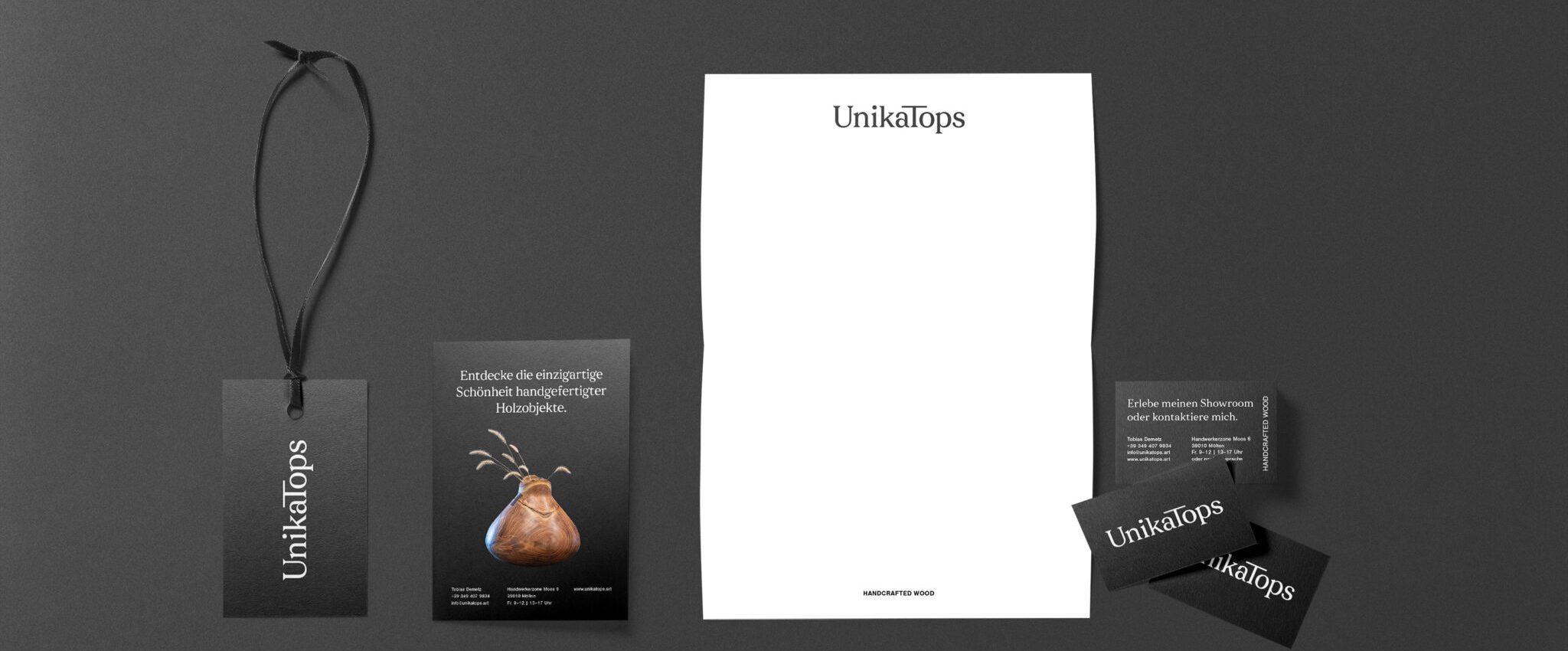Every time people interact with your brand—be it through social media posts, flyers or your website—it’s an opportunity to build a connection and establish your brand identity. And that’s where your brand collateral comes into play.
In this article, I’ll explain what brand collateral is and how it relates to other terms like brand touchpoints, marketing collateral and brand assets.
I’ll also give you plenty of examples of brand collateral and ideas on how to keep it relevant in the face of technological developments and changing consumer values.
What is Brand Collateral?
Brand collateral includes all materials created to represent a company and convey its brand identity. It can be physical or digital and includes business cards, letterheads, brochures, packaging, signage, advertising materials, or a branded website.
Your brand collateral plays an important role in establishing and maintaining a consistent and professional brand presence.
By consistently applying your branding to all promotional materials, your company can build recognition and trust with its target audience.
Brand Collateral vs Brand Touchpoints, Brand Assets, and Marketing Collateral
Terms like brand assets, marketing collateral and brand touchpoints can be confusing. They are very similar, but not the same thing. What exactly is the difference, and how does brand collateral fit into all of this?
- Brand Assets: These are the building blocks of your brand identity—visual, verbal, or other sensory cues that make your brand distinctive. Examples include your logo, typography, colours, brand voice, and even jingles or scents. These assets are always used in context: in your brand collateral.
- Marketing Collateral: These materials are a particular type of brand collateral designed to promote specific products or services and generate sales. Examples include flyers, brochures, catalogues, banners, and digital ads.
- Brand Touchpoints: These are all points of contact—intentional or unintentional—a person can have with your brand. In addition to your brand collateral, brand touchpoints could include interactions with customer representatives, product experiences, and more.
Why Your Brand Needs Brand Collateral
Without brand collateral, there isn’t much to a brand.
Even for small businesses, consistent and professional brand material is important to build credibility, brand recognition, trust and loyalty.
Here are the benefits of having brand collateral:
Professionalism and credibility
When people encounter your brand for the first time, you only have a few seconds to make an impression. The first impression shapes the entire opinion about your company, as it often is the only point of reference for judging your offer.
If the first impression is negative, you have to work much harder to convince people of the quality of your products and services. Or worse, they’ll buy elsewhere.
High quality brand collateral signals your level of expertise and uniqueness. It shows what your company is capable of and lays the foundation for further interactions.
Consistency and Differentiation
We live in a multi-channel world. Your brand can be seen anytime, anywhere—on social media, via Google or in retail.
Your brand collateral can tie your brand together and make it instantly recognisable, no matter where people experience it.
Professional and coherent brand collateral that remains consistent across all channels helps anchor your brand assets—logo, brand colors or tagline—in people’s minds. Over time, they become memorable identifiers that immediately remind people of the brand.
In this context, you might enjoy my article about distinctive brand assets.
Trust and Loyalty
A consistent appearance is the be-all and end-all when it comes to building trust.
People tend to be more positive about the familiar, a phenomenon known as the mere-exposure effect.
Your brand collateral provides the opportunity to present your brand assets in a consistent way. Over time, this helps to build trust and loyalty towards your brand.
Customer Journey and Experience
A professional appearance alone is not enough to convince people to buy from you.
Consumers need the right information at the right time. This is the best way to support their decision-making process and pick them up where they meet your brand.
Your brand collateral can guide your customers through their customer journey—from making them aware of your service to turning them into loyal repeat customers.
Your brand collateral is an opportunity to create a pleasant customer experience, address customers’ problems, present your offering as the solution, handle objections and provide all the information customers need to buy with confidence.
Types and Examples of Brand Collateral
There are generally two types of brand collateral: print and digital.
Let’s look at some examples for each type.
Printed Brand Collateral
Packaging
Of all print materials, packaging is one of the most important as it determines how your product is perceived.
In retail, where millions of products compete with each other, your packaging provides the opportunity to make your product stand out on the shelf.
If you have a direct-to-consumer brand, the unboxing experience can influence the overall impression of your brand.
A whopping 52% say they make repeat purchases when orders are shipped in high-quality packaging.
The packaging of your products can add a tactile element to the brand experience. Clever details and surprises can help with this.
Signage
Signage is another type of brand collateral that continues to be important.
For example, signage can include foldable signs, banners, point-of-sale graphics or displays at retail, trade shows or offices.
Effective signage can attract attention and convey relevant messages about your brand. For example, a sign outside a small café shows that it’s open and what’s on offer.
Signage is also a great way to get people used to a brand and its offer. A billboard, for example, could spark curiosity and encourage people to find out more about the company.
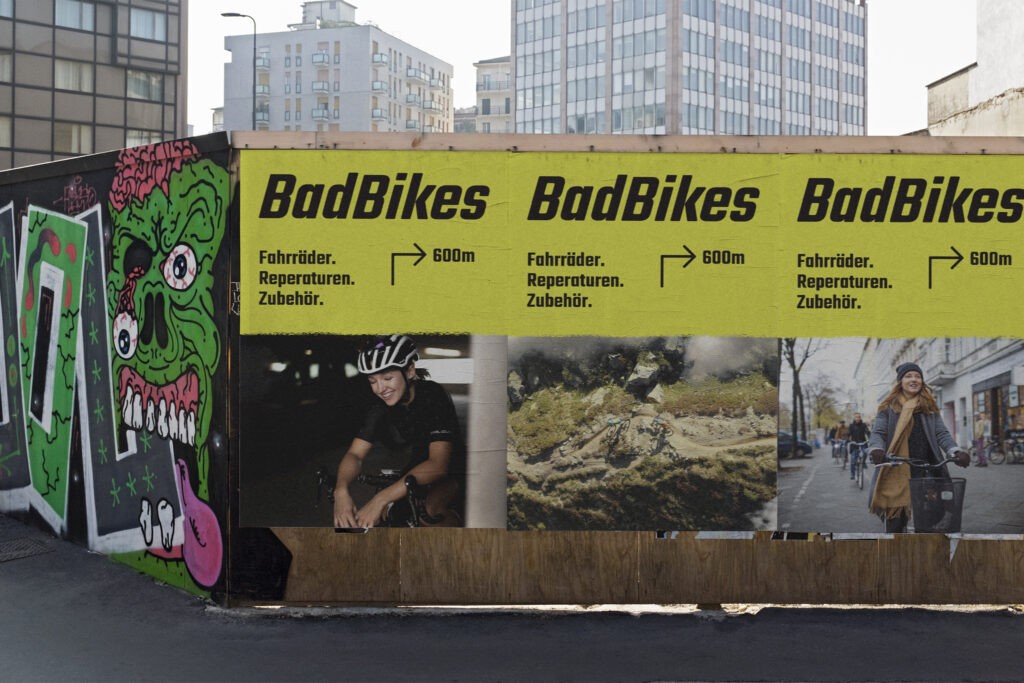
Brochures
Brochures are great for providing detailed information about your products or services, although they may not always be necessary. These days, you can provide all the information online. I often encourage my clients to do so as it’s more environmentally friendly and practical.
When you decide a brochure is necessary, ensure high content, printing, and paper quality. This can enhance the brand experience and encourage people to keep or pass them on.
You can even make a statement by using a specific printing technique. For example, why not print with algae ink if you’re a sustainable brand?
Flyers
The same goes for flyers. Instead of paying for printing flyers, these days, you could create a Facebook event.
When you print flyers, you could add interactive elements, such as QR codes that link to your website or other interactive content.
For example, a restaurant could use flyers with QR codes to link to its online menu or reservation system.
Catalogues
You hardly come across catalogues these days. However, they are still used in the B2B world or to target older consumers.
I don’t think they have a future, though. Online catalogues are much more user-friendly, given their searchability and sorting features.
Business Cards
Business cards are another typical printed brand collateral. And like brochures, catalogues, and flyers, they’re not as relevant today as they used to be. However, they still serve as a physical reminder of a meeting or event.
If you design business cards, why not make them smart? For example, special QR codes known as “Vcodes” can save and automatically add contact information to someone’s contact list.
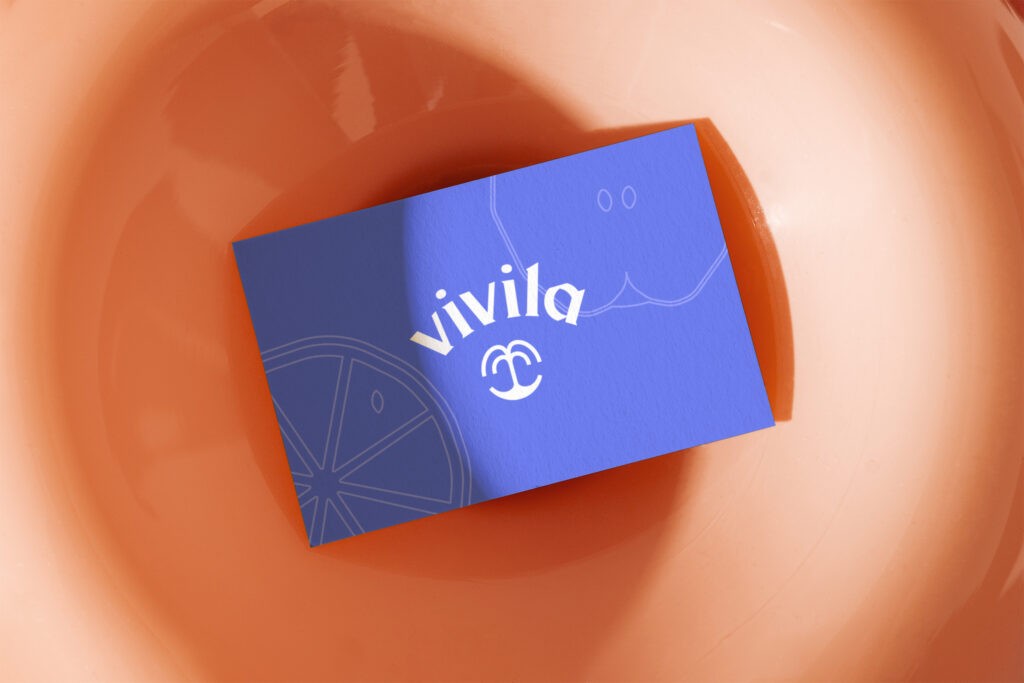
Stationery
Stationery includes branded letterheads, envelopes, contracts and other materials for official correspondence. Adding your branding to it is easy and relatively cost-effective.
Merchandise
Promotional items such as branded apparel, accessories, and customer gifts are also considered brand collateral. The idea is that these items get passed around, exposing the brand to more people. Examples are:- Branded apparel (t-shirts, hats, hoodies)
- Accessories (tote bags, phone cases, stickers)
- Drinkware (mugs, water bottles, glasses)
- Stationery (pens, notebooks, sticky notes)
- Gadgets (USB drives, power banks, headphones)
- Other (keychains, stress balls, tasters)
Tip: Before finalising your design, you can use mockups to see how your printed materials will look in real life.
Not sure where to find high-quality mockups? Check out my article on premium mockup sites—a curated list of the best mockup sites (including some discount codes).
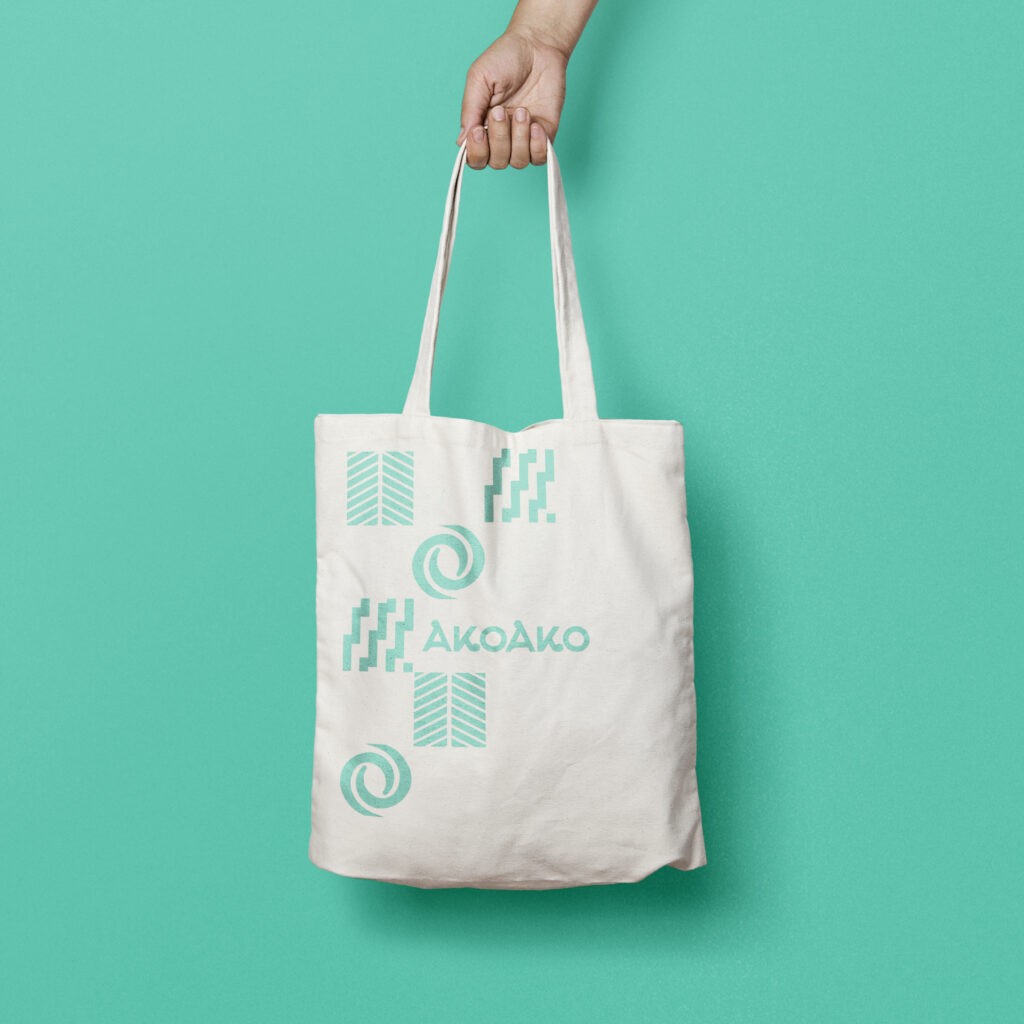
Printed Ads
Ads in magazines and newspapers also count as printed brand collateral.Digital Brand Collateral
Website and Landing Pages
Your website is the single most important brand collateral. It’s your information hub, where all news, links, whitepapers, products, and service descriptions come together.
Your website allows you to guide people to where you want them to go.
You can also incorporate social proof, such as testimonials from other satisfied customers.
A dedicated landing page can be a strategic move when you want to drive specific actions or promote particular services or products. Focusing only on one goal, you can send all your traffic to this page—from SEO, social media, or even through a QR code in your brochure.
The beauty of having all your information on your website is in its flexibility. You can update information quickly and even conduct A/B testing to refine your messaging and design.
If you’d like to learn more about the benefits of having a website, you’ll like my 15 reasons why your brand still needs a website.
Or you might like my article on designing a website that drives conversions.
Social Media Profiles and Posts
Social media is a great way to promote your brand. While the content should be authentic and natural, you should still try to make it look and sound consistent with your overall brand identity.Email Templates
Use branded email templates for newsletters, promotional emails, and transactional messages. Page-builder software like Mailchimp, ConvertKit, and plenty more make this easy.Digital Ads
Strategically targeted online advertisements are also brand collateral. They should consistently use your brand assets while being fresh and exciting.Educational Material and Content
Educational content like white papers, case studies, infographics, presentation slides, and explainer videos can help people notice and engage with your brand.
Needless to say, this material should always be branded to connect back to your company, familiarise people with your brand assets, and increase their trust in your brand.
Aligning Brand Collateral With the Customer Journey
I briefly mentioned the customer journey before. To persuade people to buy from your brand, provide them with the right information at the right time.
Aligning your brand collateral with your customer journey will help you communicate effectively and thoroughly. Even when in real life, this journey is not always linear.
Here are the five stages of the customer journey, along with some examples of suitable brand collateral for each stage:
1. Awareness Stage
The awareness stage is when people are first exposed to your brand and learn your company exists. They might become aware of a need or problem and begin researching solutions.
Goal: Identify customer pain points and challenges your products or services can address.
Brand Collateral: Create brand collateral that educates and engages your audience by addressing their pain points and offering solutions. This will help establish your brand as a trusted authority in your industry and lay the foundation for further engagement.
Examples:
- Blog Posts
- Social Media Graphics
- Videos
- Promotional Materials, such as tote bags, etc.
2. Consideration Stage
In this stage, people evaluate different options and compare them based on features, pricing, and other factors.
Goal: Provide detailed information about your products or services to help customers make informed decisions.
Brand Collateral: Develop brand collateral that highlights your product features, benefits, and unique selling points. This will help customers understand how your products or services can meet their specific needs and requirements.
Examples:
- Product Brochures
- Comparison Guides
- Product explainer video
3. Decision Stage
In this stage, the customer makes a purchase decision, selecting the product or service that best meets their needs.
Goal: Encourage customers to choose your brand over competitors and make a purchase.
Brand Collateral: Offer collateral that instils confidence and trust in your brand. This will help reassure customers that they are making the right decision by choosing your products or services.
Examples:
- Proposals
- Presentations
- Services page
4. Purchase Stage
In this stage, the customer makes the transaction.
Goal: Facilitate a smooth and seamless transaction process for customers.
Brand Collateral: Provide brand collateral that guides customers through the purchase process and makes it easy to complete their transactions.
Examples:
- Branded Order Forms
- Pricing Guides
- Custom quotes
5. Post-Purchase Stage
After the purchase, the customer experiences the product or service and decides whether to buy again or tell their friends about it.
Goal: Foster long-term relationships with customers and encourage repeat business.
Brand Collateral: Create brand collateral that keeps customers engaged and informed even after purchasing.
Examples:
- Helpful instructions and user manuals
- Branded Newsletters
- Birthday cards
Best Practices for Developing Effective Brand Collateral
Invest in Professional Branding and Design
Your brand collateral will be more effective when it’s designed professionally—and I don’t just mean visually pleasing.
When you invest in brand strategy and branding from the start, you can develop a brand identity that connects with your audience and sets your company apart. You can also create a messaging strategy that addresses people’s problems, needs, and objections effectively.
Your brand collateral can then be used strategically to express the brand identity and address people’s needs.
Further reading: When is the best time for branding?
Ensure Consistency
I’ve said it before, and I’ll say it again: Keep your brand colours, brand typography, logo, and messaging consistent across all branded materials. This builds familiarity and trust and signals professionalism.
You can develop brand guidelines to ensure everyone in your organisation adheres to the same standards.
Regular Updates and Revisions
When your strategy, market, or offer changes, you need to keep your brand collateral up to date.
You can also analyse customer feedback or data to make informed decisions about optimising the brand collateral.
Future Trends for Brand Collateral
I already touched on this topic when we looked at brand collateral examples. Many of the classical ways of brand communication are now outdated.
So, what’s next? Which trends should we look out for?
Digital-First Approach
As businesses and consumers increasingly shift to online platforms, digital brand collateral becomes more important.
Websites, social media, and email marketing are now among the most important channels for brand communication.
Businesses also start to rethink digitalisation in other areas. For example, Tapt offers digital business cards that use NFC technology, allowing users to share their contact details simply by tapping their card on a smartphone.
Digital Integration
The increasing number of digital channels means consumers now interact with more touchpoints than ever during their customer journey. This may lead to traditional print materials like business cards becoming obsolete for many brands.
However, there’s an opportunity to combine digital and print, for example, by using QR codes in brochures to direct users to your website or explainer videos.
Interactive and Dynamic Content
People are becoming lazier, more distracted, and no longer want to read lengthy brochures.
Thanks to new technologies, brand material can now include more interactive elements, such as videos, animations, quizzes, and augmented reality experiences.
Another example is including augmented reality. For example, Bombay Sapphire launched a limited-edition bottle with an AR experience.
Customised and Personalised Experiences
Companies can now use data to create personalised content that connects with individual consumers. While larger brands already use this technology, it’s not as complicated as you might think for small brands to replicate.
Tools driven by artificial intelligence enable the creation of personalised and dynamic collateral, automating design processes and personalising marketing messages based on consumer behaviour and preferences.
In this context, creating a community and letting your audience co-create your brand collateral might become interesting.
I’ve written an article to give you some thoughts on personalisation for small brands.
Sustainability
As businesses increasingly prioritise sustainability, eco-friendly practices in brand collateral production are becoming a given.
A staggering 74% of consumers are willing to pay more for sustainable packaging. And that’s not even including other materials.
I wrote a comprehensive article with many ideas for creating more sustainable branding.
Conclusion
Your Brand collateral remains as important as ever in shaping a unified and professional brand identity. This branded material strengthens marketing efforts, enhances brand visibility, and builds long-term trust in your brand.
However, with fast-evolving technology and changing consumer values, it’s necessary to rethink the types of brand collateral you use.
By embracing a digital-first mindset, infusing interactivity into your brand narrative, acting sustainably, and personalising, your brand can stay relevant and engaging.
Investing in top-notch brand collateral is the key to long-term success. It ensures effective brand communication and fosters ongoing relationships with your customers.
Need help with your branding? Contact me and let’s see how I can help you.
Title image © Author
